Customer attrition: What it is, why it matters, and how to track and reduce it

Tags
Share
How many customers do you lose on a monthly, quarterly, or yearly basis? If your customer attrition rate is on the rise, don’t worry—you’re not alone.
Nonetheless, keeping an eye on customer attrition should be at the top of your priority list, especially for SaaS and subscription-based companies.
Luckily, we’ve got all the tips and tricks you need to help you measure and reduce customer attrition in your business. However, before we get to attrition prevention strategies, let’s discuss what customer attrition is and why it’s important.
What is customer attrition?
Customer attrition refers to the percentage of customers who stop using your product or service within a given time period.
It presents differently in different industries. For SaaS companies, for example, a churned customer is one who cancels their subscription, whereas in retail, it’s a customer who stops making their usual repeat purchases.
Customer attrition vs. churn: What’s the difference?
You’ve probably heard customer attrition and customer churn being used interchangeably, but are they the same thing?
Essentially, yes. However, while churn usually describes the loss of customers due to company-controlled factors (such as product dissatisfaction or poor customer service), customer attrition is a little broader. It includes external factors like market conditions, competitive pressure, and the economic climate.
Why is customer attrition important?
Having a high customer attrition rate is just a fancier way of saying you’re losing your current customers. This can be devastating to your bottom line which, for the most part, relies on the profits generated by existing purchasers.
Do a quick Google search, and you’ll see no shortage of statistics proving that keeping your existing customers is more profitable than finding new ones. Not only are they more likely to buy what you’re selling, but they perform a bunch of profit-generating actions, too (like writing positive reviews, making recommendations, joining your loyalty program).
So, it’s vital you keep an eye on churn and take steps to stop it before it escalates.
Common causes of customer attrition
Common causes of customer attrition include:
Poor customer service
Long call queues, multiple transfers, unknowledgeable agents—there are a bunch of factors that can create poor customer service experiences.
It’s unsurprising, then, that Salesforce discovered that 48% of customers switch brands to seek out better customer service experiences elsewhere.
Customer service is so directly related to customer retention that even small businesses are now using contact centre solutions and customer engagement platforms to deliver omnichannel experiences.
These solutions, like Dialpad, allow businesses to manage customer interactions via voice, video, and digital channels:
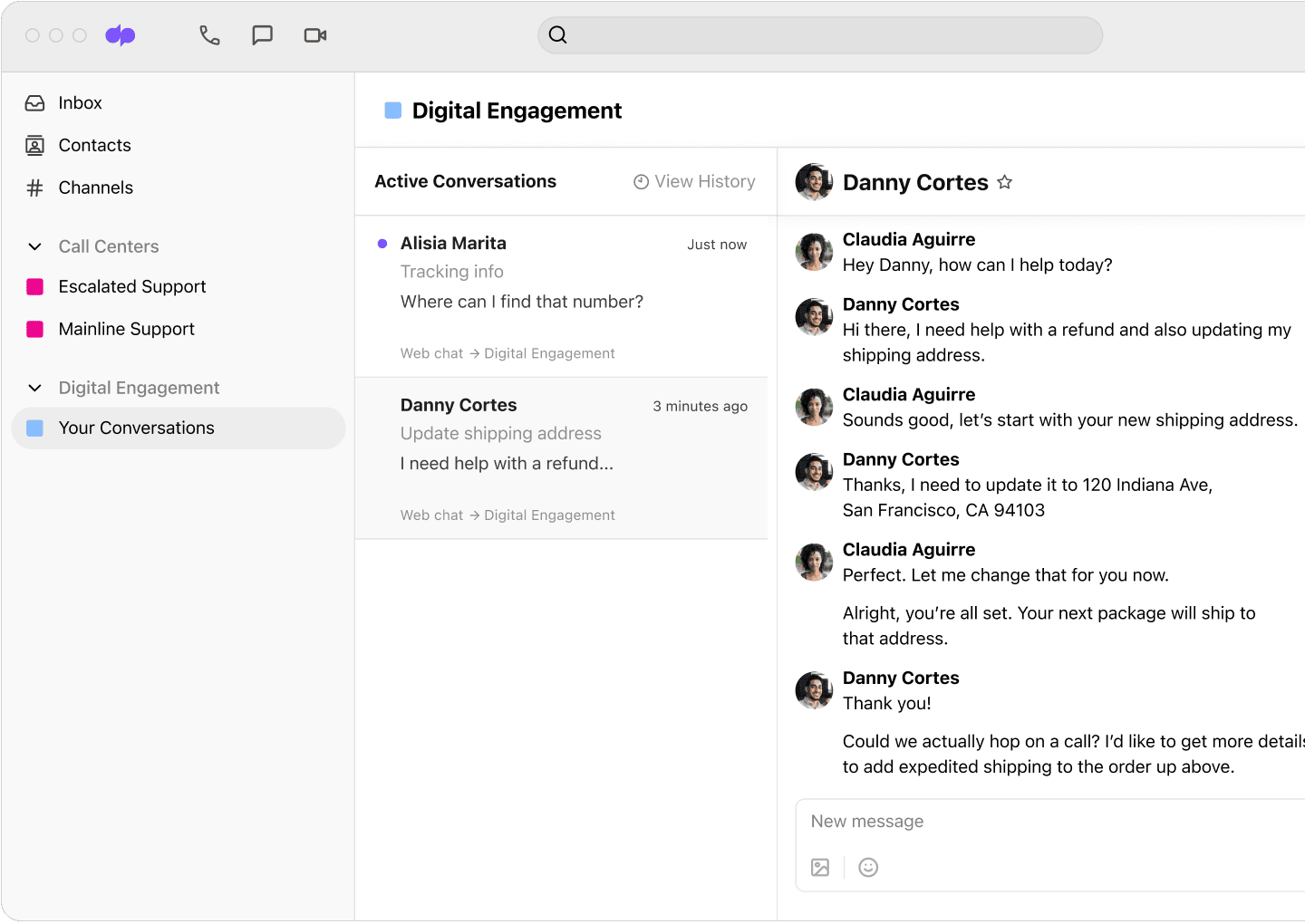
Product dissatisfaction
A product that’s riddled with bugs and glitches is going to lead to high levels of customer churn. Similarly, one that’s difficult to use will turn customers off during the onboarding stage—way before they experience the product’s full value.
Pricing
Even raising your subscription fee by a couple of pounds can cause customers to seek out more cost-effective solutions.
They can also be swayed by competitor promotions and deals. Customer attrition analysis can help you identify these trends and respond accordingly.
Changing customer needs
If a customer’s needs change, they might not perceive your product to be of value to them anymore. Repositioning your product to demonstrate use cases that may appeal to their new needs can reduce attrition.
What is the customer attrition rate?
Your customer attrition rate is one of the main metrics to track if you want to prevent churn. It tells you the percentage of customers who have stopped using your product or service within a specific time frame, such as a month, quarter, or year.
Customer attrition rate calculation
Calculating your customer attrition rate, or churn rate, is simple. Take the number of customers lost, divide it by the total number of customers you had at the beginning, and multiply the result by 100.
Here’s what the customer attrition rate formula looks like:
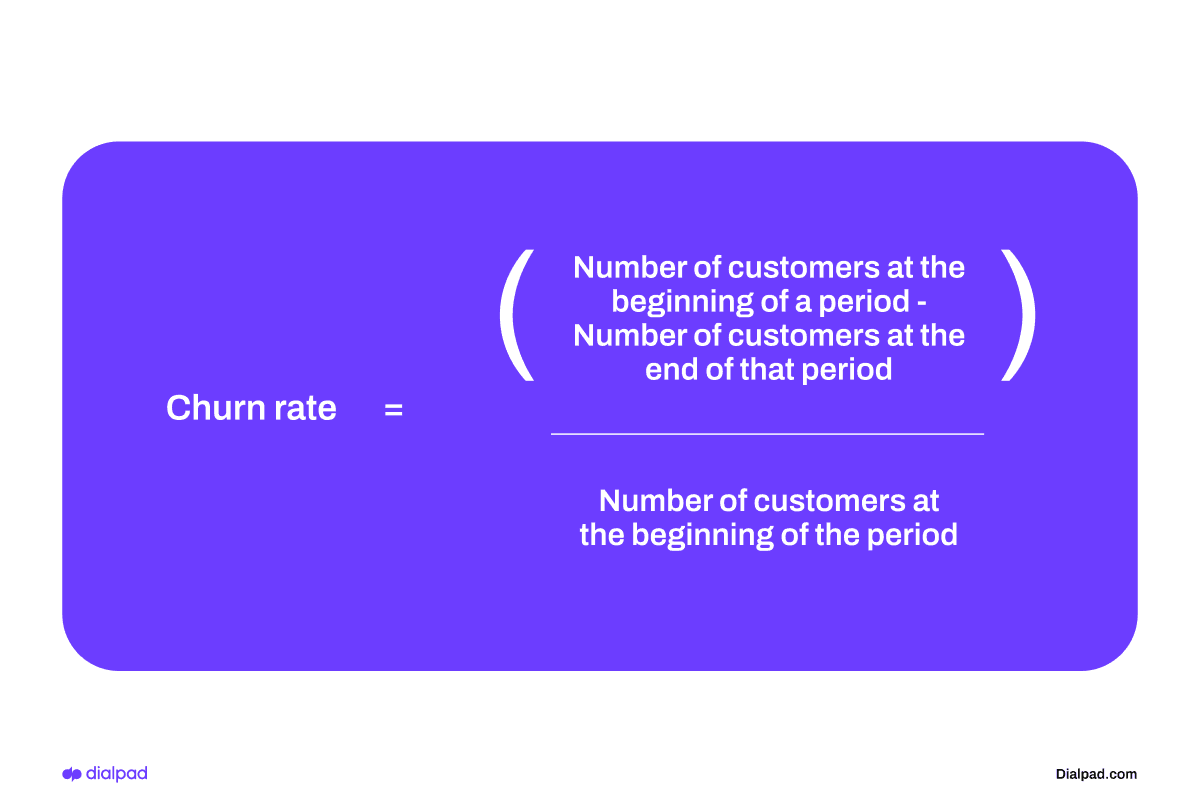
Let’s say you started the month of July with 200 customers, and by the end, you’d lost 25 of them. To work out your attrition rate, you’d perform this calculation:
(25 ÷ 200) x 100 = 12.5
So, your churn rate for July would be 12.5%. Yep—knowing how to calculate customer attrition rate really is that simple!
How to reduce customer attrition rate in your business: 5 Hints and tips
So, how can you reduce the customer attrition rate in your business?
1. Identify customers at risk of churning
Customers at risk of attrition will act differently depending on what stage of the customer journey they’re at. They may start using your product less or call your customer service team to complain.
It’s up to you to analyse churn when (or ideally, before) it happens. This enables you to not only identify and target at-risk customers, but understand why it occurs, when it happens, and what you can do to prevent it.
If you use Dialpad’s “Custom Moments” feature, you can track how often keywords like “refund” or “issue” come up on customer calls:
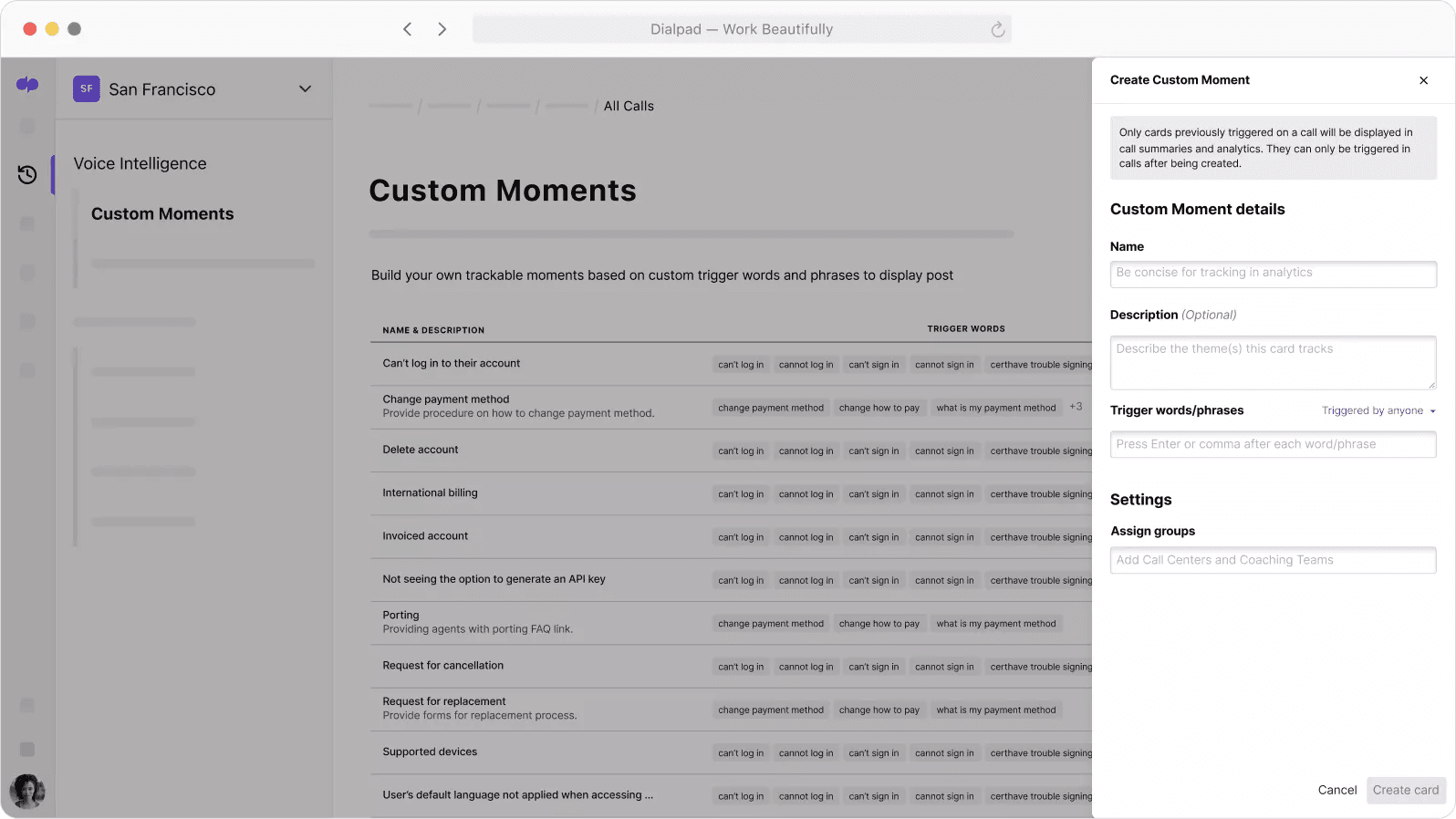
From there, you can explore potential correlations between specific issues, customer preferences, and customer attrition. Giving you the chance to not only reach out to customers showing signs of unhappiness, but also proactively rectify any issues before they impact other customers.
2. Empower your agents to deliver flawless customer service
There’s no replacing the value of excellent customer service.
Think about it—it’s not the rewards that keep customers coming back to much-loved brands like Amazon, Specsavers, and First Direct. It’s their intricately efficient and personalised customer service experiences.
How do you deliver the same top-tier service to your customers? You use a communications solution like Dialpad.
Dialpad doesn’t just unify your customer conversations into one workspace. It integrates with your CRM to empower agents to deliver fast, consistent, and personalised experiences across channels. But the most unique, churn-reducing feature of Dialpad’s platform is its proprietary, industry-leading artificial intelligence, Dialpad Ai.
Dialpad Ai gives agents access to advanced features like real-time transcriptions, and also allows you to create RTA (Real-Time Assist) cards that are automatically triggered when tricky topics come up on calls.
RTA cards pop up on your agents’ screens like this:
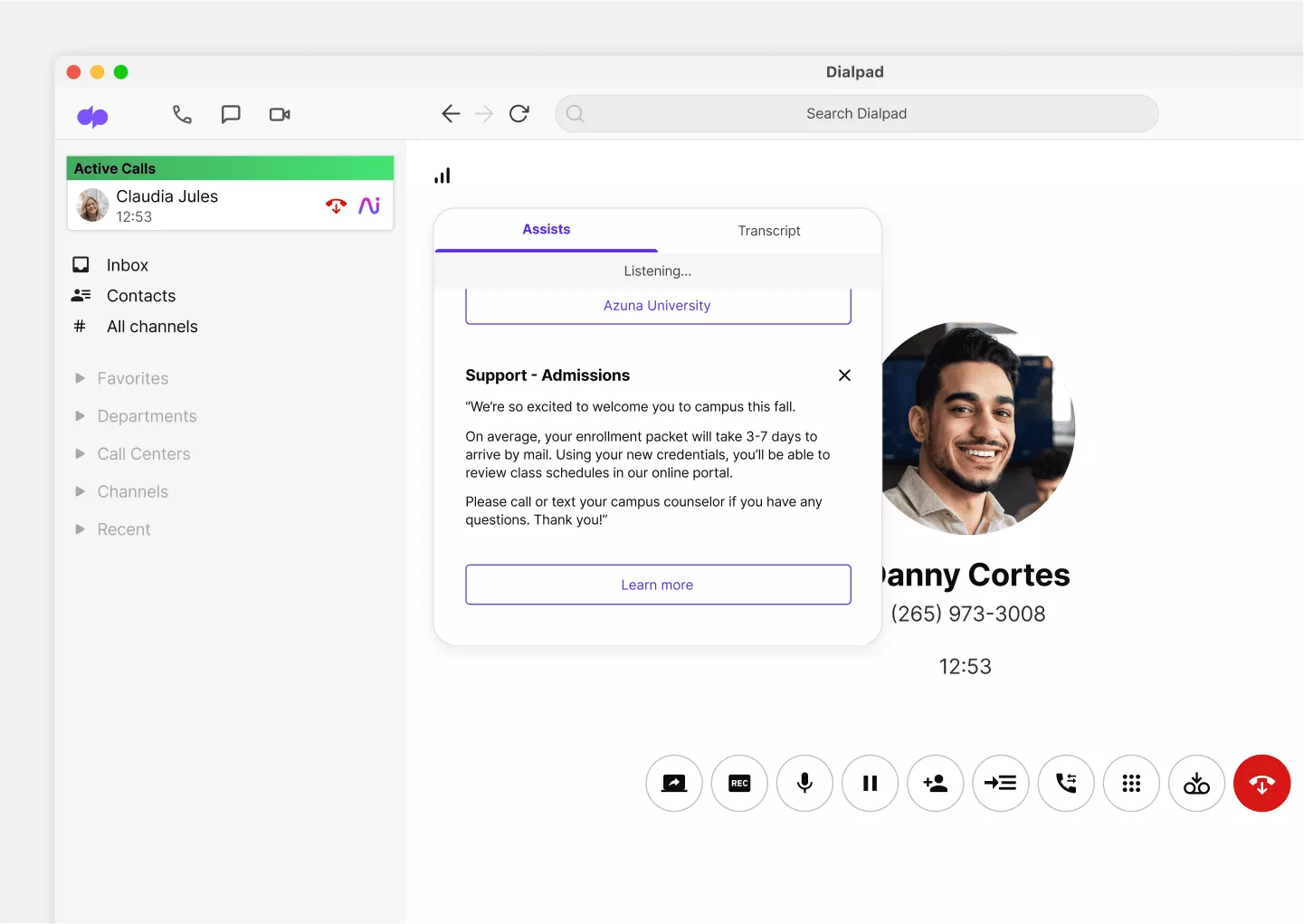
If you notice lots of customers calling in with a specific question or problem, you can create targeted RTA cards to help agents resolve the issue more effectively.
Faster resolutions = happier customers. And happier customers are less likely to churn.
Dialpad can also gauge the sentiment of calls in real-time and immediately alert supervisors if things are going poorly. Supervisors can then quickly look at the call transcript and decide how to intervene:
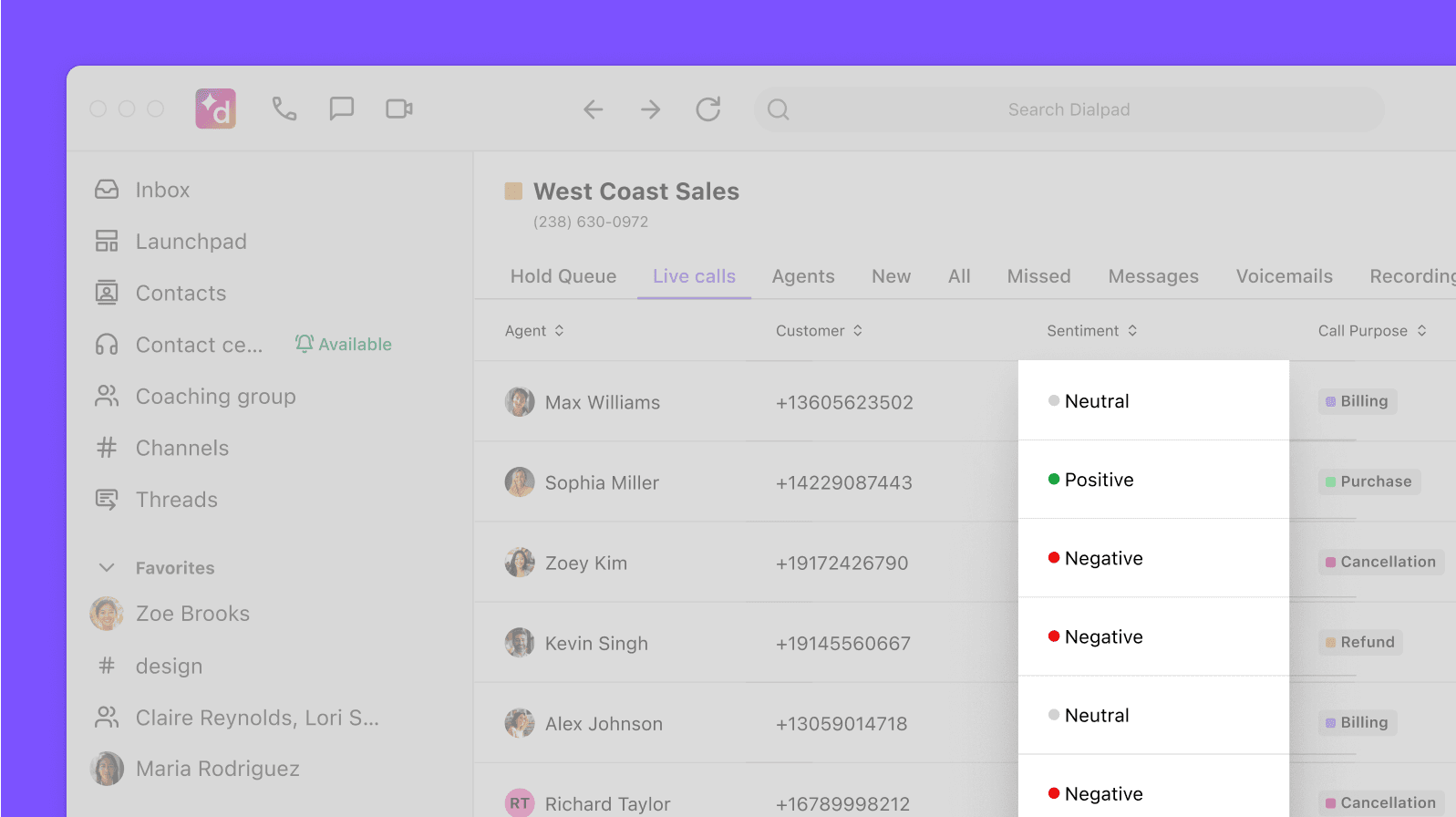
3. Ask for feedback
One of the best ways to prevent customer attrition is to go directly to the source and simply ask them what you can do better.
Requesting feedback can give you invaluable insights into how to improve the customer experience, but collecting it can be difficult.
That said, you can always use Dialpad’s in-built CSAT survey feature to create customer feedback surveys in minutes. Or, for those who don’t respond to surveys—unfortunately, that’s a huge 95% of customers—there’s Dialpad’s proprietary Ai CSAT feature instead.
Dialpad Ai can transcribe all of your calls, analyse their sentiments, and infer accurate CSAT scores for 100% of customers, which means you don't have to rely on surveys (which don't always get many responses):
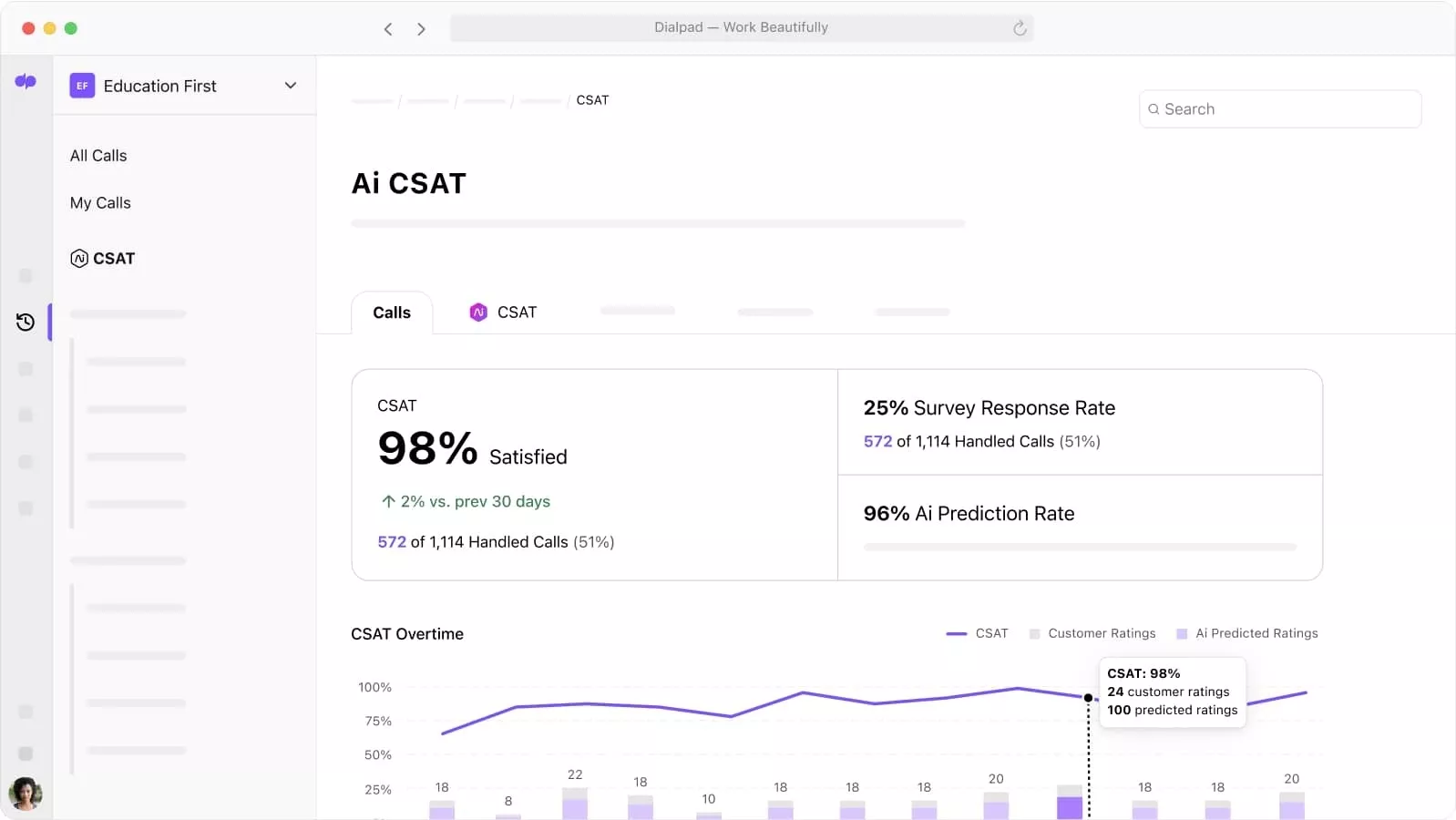
4. Offer incentives
Many customers switch brands to search for a better deal. So, slip your customers a tempting promotion or discount, and you might just prevent attrition.
It’s important to offer incentives strategically to reap maximum value. Discounted renewals work well when they’re offered to customers who are near the end of their subscription, for example. Promotions and loyalty programs can also be effective for those who haven’t made a purchase in a while.
5. Proactively engage with customers
Don’t wait for customers to contact you with an issue—or, worse, slowly slink away—before you initiate engagement.
By proactively interacting with customers before they become a churn risk, you demonstrate how much you value their support. Reach out to them with targeted messaging to keep your brand at the front and centre of their minds.
Along with offering incentives, you can engage with customers by creating high-quality blog content, updating them on useful features, getting them to follow you on social media, or asking for feedback.
Stay on top of customer attrition and see the benefit in your bottom line
Your bottom line depends on the repeat business generated by existing purchasers. By reducing attrition, you hold on to more of your most valuable customers and sustainably support business longevity.
Need an advanced, AI-powered customer engagement platform to unify all your customer conversations in one place? Want to utilise hyper-accurate AI to drive better customer service experiences and uncover deeper insights into why your customers churn? Then get a demo of Dialpad to get a first-hand look at how it works!
